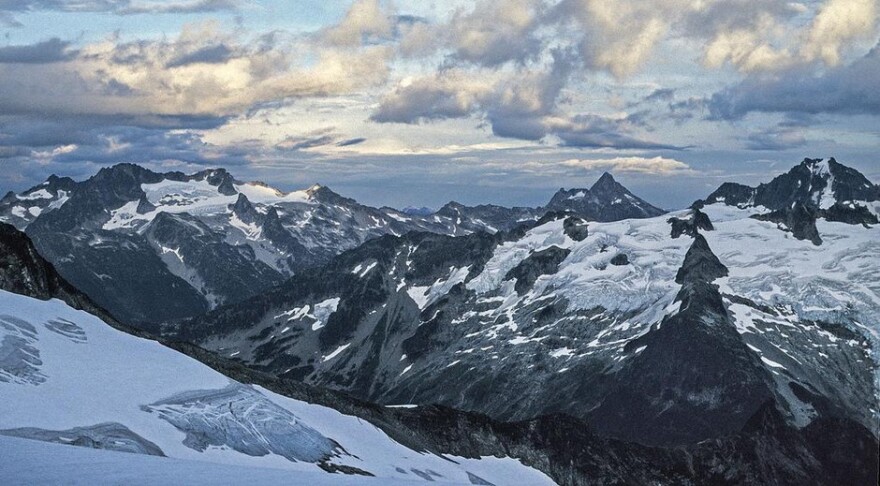
Listen
Climate change is heating up national parks much faster than the rest of the U.S. That’s according to a first-of-its-kind study that looked all 417 national parks, including those in the Pacific Northwest.
The study found that national parks are especially hard hit by climate change, in part, because of their locations at high elevations, in arid deserts or Arctic zones, said Patrick Gonzalez, study co-author and climate change scientist at the University of California, Berkeley.
“National parks aren’t a random sample — they are remarkable places and many happen to be in extreme environments,” Gonzalez said in a news release. “Many are in places that are inherently more exposed to human-caused climate change.”
The researchers found that, historically, temperatures in national parks increased at double the rate of the rest of the country. They also found participation decreased more rapidly in many national parks than other parts of the U.S.
“We found that human-caused climate change has caused impacts in places where we found significant historical temperature increases,” Gonzalez said. “Glaciers melting in Glacier Bay National Park in Alaska. Bark beetles killing trees in Yellowstone National Park. Vegetation shifting upslope in Yosemite National Park in California.”
Looking forward, if emissions stay the way they are now, that could mean average temperatures in the most vulnerable national parks could increase by 16 degrees Fahrenheit by 2100, according to the study.
The study was published in the journal Environmental Research Letters.
In the Northwest, the two parks that have historically seen the biggest average temperature increases are Washington’s North Cascades National Park and the Oregon Caves National Monument and Preserve, Gonzalez said. Both have seen average temperature increases of about 2.9 degrees Fahrenheit per century.
And that can dramatically change the temperatures at high elevations.
“It’s the equivalent of (lowering) a mountain two times the height of the Washington Monument, from cooler areas at high elevations to warmer areas down lower,” Gonzalez said.
The North Cascades are already seeing dramatic effects of a warming climate, said Jon Riedel, a geologist at the park. For the last 25 years, he’s monitored glaciers at the North Cascades, Mount Rainier and Olympic national parks.
“I’ve witnessed quite a bit of change in that time — measured quite a bit of change,” Riedel said.
Over the past 100 years, Riedel said, the area in the North Cascades covered by glaciers has shrunk by more than 50 percent.
He’s looked at what that means for the surrounding ecosystem. He found that the recession of glaciers has impacted the summer melt into the Skagit watershed. Over 30 years, the lost ice added up to around 800 billion gallons of water, or three cubic kilometers.
“That was pretty staggering to see how much ice has been lost,” Riedel said.
That impacts summer streamflow in the Skagit River. (All of the glaciers in the Skagit watershed contribute about 10 percent of the summer streamflow right now, Riedel said.)
He said the North Cascades have also seen flood regimes change, especially in colder parts of the park — near the Stehekin Valley. Floods used to happen in the spring when snow melted. Now, the area is more often flooding in the fall, as precipitation changes.
All that can lead to other broad ecosystem changes, Riedel said: trees invading meadows, changes in water temperature and quality, loss of habitat for species like glacier worms, which are prey for birds like rosy finches.
“So a pretty big ripple effect through the landscape with the loss of glaciers,” Riedel said.
Nationally, the study Gonzalez worked on predicts parks in Alaska will be the most vulnerable to temperature increases. Parks in the U.S. Virgin Islands may see the most decreases in rainfall.
No other study had previously looked at the severity of climate change across all the country’s national parks.
In the future, these predictions could spell trouble for many national parks. More wildfire in Yellowstone, the death of Joshua trees, the possible disappearance of pika in Lassen Volcanic National Park in California, Gonzalez said. The researchers have provided information to the national parks, Gonzalez said, to help with management decisions.
But the future isn’t all dire, he said.
“Our actions — reducing carbon pollution from cars, power plants, and other human sources — can save parks from the most heat,” Gonzalez said.
Reducing emissions could reduce temperature increase by half to two-thirds by the end of the century, he said.
“That’s using available technologies and behaviors, like energy efficiency, renewable energy, public transportation,” Gonzalez said.
He finds hope in that.
“National parks form the core of nature. They conserve our most intact natural places, harboring endangered plant and animal species and protecting unique ecosystems,” Gonzalez said. “(They also) protect watersheds that provide drinking water and store carbon to naturally reduce climate change.”

